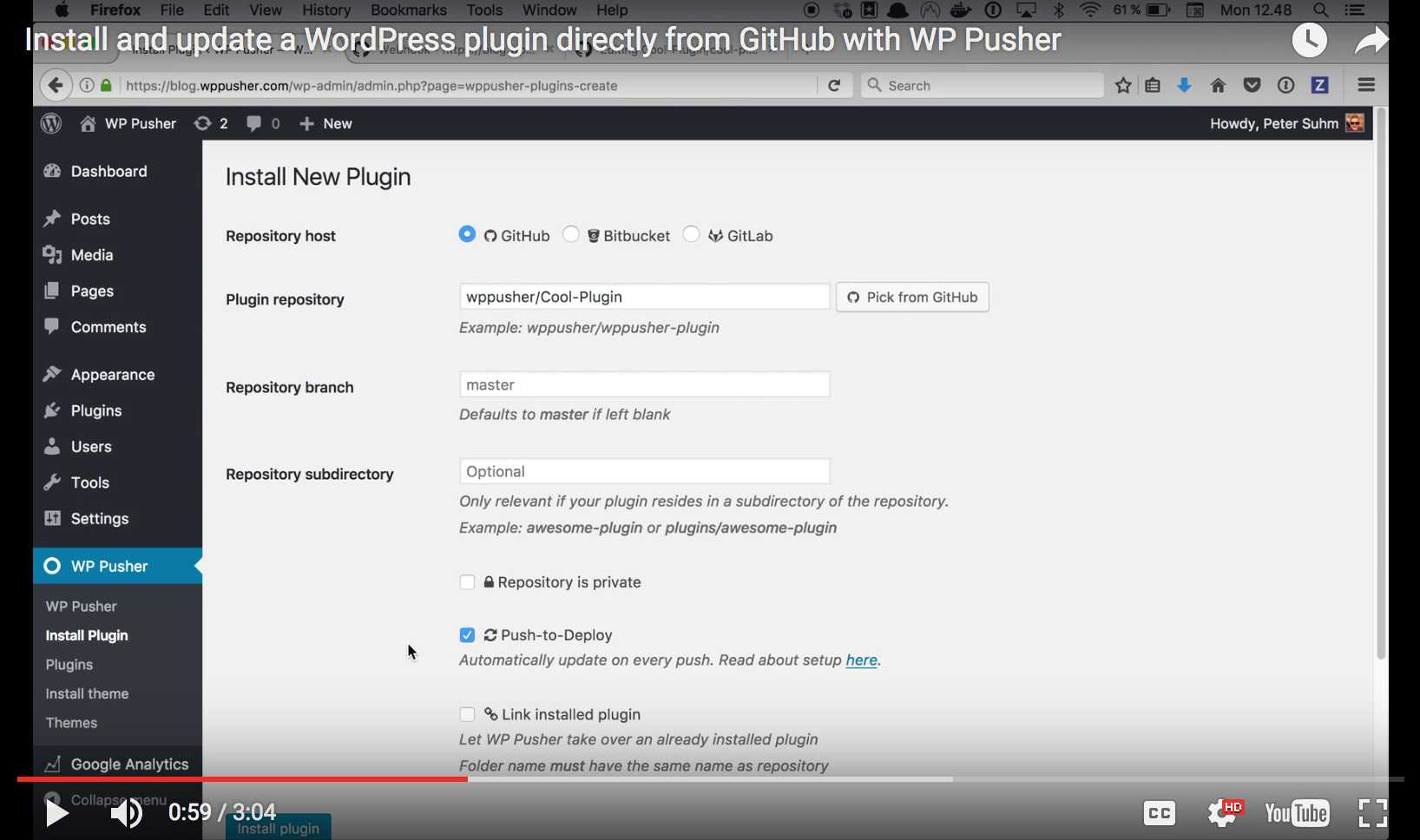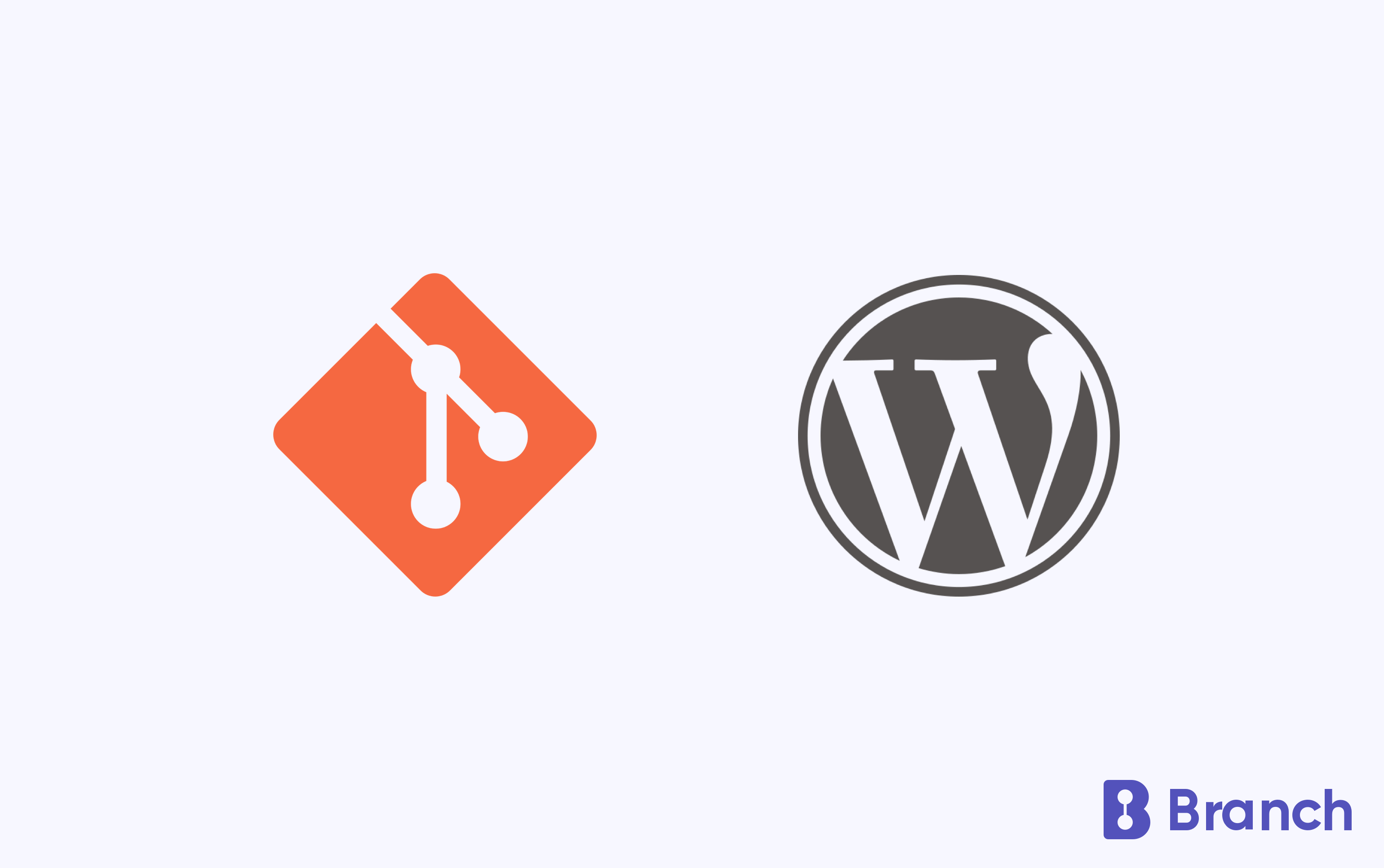WordPress directory structure is not that user friendly for using git with it. So I would suggest you to use this with rather git friendly modified architecture. No, no need to panic. You don't necessarily have to create this. There are a lot of that kinds of boilerplate or structured WordPress system out there. Just pick one of them and start. Git Workflow Edit. This documentation is intended to help you get started using git with Gutenberg. Git is a powerful source code management tool; to learn git deeply, check out the Pro Git book available free online under CC BY-NC-SA 3.0 license. If you are unfamiliar with using git, it.
This documentation is intended to help you get started using git with Gutenberg. Git is a powerful source code management tool; to learn git deeply, check out the Pro Git book available free online under CC BY-NC-SA 3.0 license.
If you are unfamiliar with using git, it is worthwhile to explore and play with it. Try out the git tutorial as well as the git user manual for help getting started.
The Gutenberg project follows a standard pull request process for contributions. See GitHub’s documentation for additional details about pull requests.
Overview Overview
An overview of the process for contributors is:
- Fork the Gutenberg repository.
- Clone the forked repository.
- Create a new branch.
- Make code changes.
- Confirm tests pass.
- Commit the code changes within the newly created branch.
- Push the branch to the forked repository.
- Submit a pull request to the Gutenberg repository.
See the repository management document for additional information on how the Gutenberg project uses GitHub.
Wordpress Fitness App
Git Workflow Walkthrough Git Workflow Walkthrough
The workflow for code and documentation is the same, since both are managed in GitHub. You can watch a video walk-through of contributing documentation and the accompanying slides for contributing to Gutenberg.
Here is a visual overview of the Git workflow:
Step 1: Go to the Gutenberg repository on GitHub and click Fork. This creates a copy of the main Gutenberg repository to your account.
Step 2: Clone your forked repository locally. It is located at: `https://github.com/YOUR-USER-NAME/gutenberg`. Cloning copies all the files to your computer. Open a terminal and run:
This will create a directory called gutenberg with all the files for the project. It might take a couple of minutes because it is downloading the entire history of the Gutenberg project.
Step 3: Create a branch for your change (see below for branch naming). For this example, the branch name is the complete string: update/my-branch
Using Git With Wordpress
Step 4: Make the code changes. Build, confirm, and test your change thoroughly. See coding guidelines and testing overview for guidance.
Step 5: Commit your change with a good commit message. This will commit your change to your local copy of the repository.
Step 6: Push your change up to GitHub. The change will be pushed to your fork of the repository on the GitHub
Step 7: Go to your forked repository on GitHub — it will automatically detect the change and give you a link to create a pull request.
Wordpress Fitness Websites
Step 8: Create the pull request. This will create the request on the WordPress Gutenberg repository to integrate the change from your forked repository.
Step 9: Keep up with new activity on the pull request. If any additional changes or updates are requested, then make the changes locally and push them up, following Steps 4-6.
Do not make a new pull request for updates; by pushing your change to your repository it will update the same PR. In this sense, the PR is a pointer on the WordPress Gutenberg repository to your copy. So when you update your copy, the PR is also updated.
That’s it! Once approved and merged, your change will be incorporated into the main repository. 🎉
Branch Naming Branch Naming
You should name your branches using a prefixes and short description, like this: [type]/[change].
Suggested prefixes:
add/= add a new featuretry/= experimental feature, “tentatively add”update/= update an existing featureremove/= remove an existing featurefix/= fix an existing issue

For example, add/gallery-block means you’re working on adding a new gallery block.
Keeping Your Branch Up To Date Keeping Your Branch Up To Date
When many different people are working on a project simultaneously, pull requests can go stale quickly. A “stale” pull request is one that is no longer up to date with the main line of development, and it needs to be updated before it can be merged into the project.
There are two ways to do this: merging and rebasing. In Gutenberg, the recommendation is to rebase. Rebasing means rewriting your changes as if they’re happening on top of the main line of development. This ensures the commit history is always clean and linear. Rebasing can be performed as many times as needed while you’re working on a pull request. Do share your work early on by opening a pull request and keeping your history rebase as you progress.

The main line of development is known as the trunk branch. If you have a pull-request branch that cannot be merged into trunk due to a conflict (this can happen for long-running pull requests), then in the course of rebasing you’ll have to manually resolve any conflicts in your local copy. Learn more in section Perform a rebase of How to Rebase a Pull Request.
Once you have resolved any conflicts locally you can update the pull request with git push --force-with-lease. Using the --force-with-lease parameter is important to guarantee that you don’t accidentally overwrite someone else’s work.
To sum it up, you need to fetch any new changes in the repository, rebase your branch on top of trunk, and push the result back to the repository. These are the corresponding commands:
Keeping Your Fork Up To Date Keeping Your Fork Up To Date
Working on pull request starts with forking the Gutenberg repository, your separate working copy. Which can easily go out of sync as new pull requests are merged into the main repository. Here your working repository is a fork and the main Gutenberg repository is upstream. When working on new pull request you should always update your fork before you do git checkout -b my-new-branch to work on a feature or fix.
You will need to add an upstream remote in order to keep your fork updated.
To sync your fork, you first need to fetch the upstream changes and merge them into your local copy:

Once your local copy is updated, push your changes to update your fork on GitHub:

The above commands will update your trunk branch from upstream. To update any other branch replace trunk with the respective branch name.
